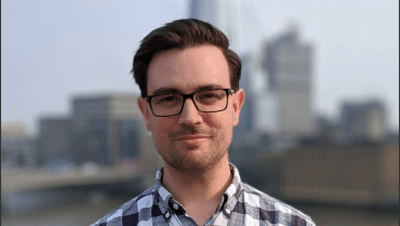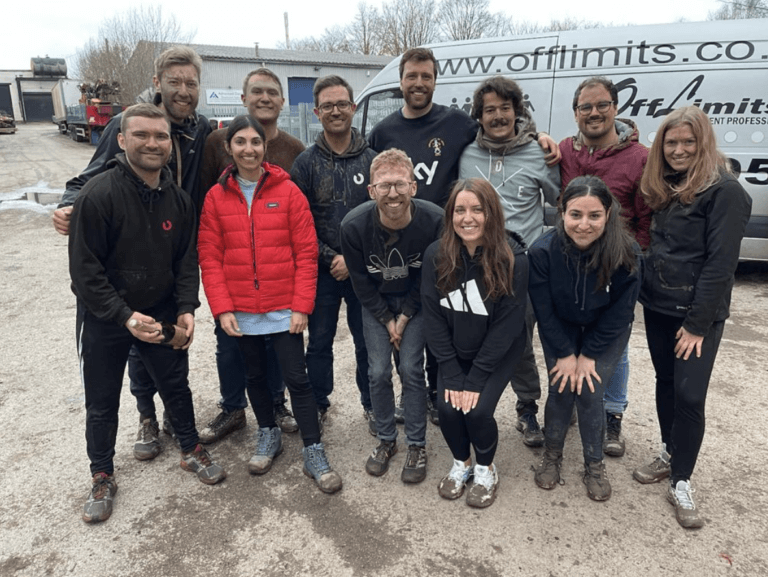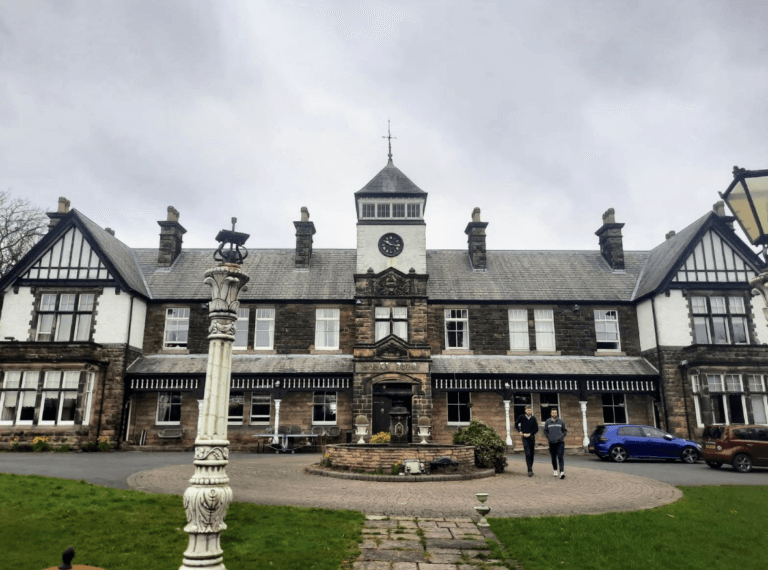2022: Our Year in Review
2022: Our Year In Review
This year went by with the snap of a finger.
At least, that’s how it feels.
After what felt like the end of the pandemic, and the return to some sort of normality, I think a lot of people (myself included) were expecting some sort of ‘roaring twenties’, whereby markets would open up and we could expect high growth across the board for ourselves and our clients.
The first quarter did start like that. We won 7 out of 8 pitches in the first few months. A highlight here was winning against a host of major independent agencies in the UK, which felt like a great achievement and confirmation that we were going in the right direction.
Towards the end of February, the first domino fell in the macro conditions which ultimately led to the economic challenges we see today. Russia invaded Ukraine – which impacted global markets, energy prices, and consumer confidence – and that paired with the political instability in the UK, previous economic policies, and global challenges meant inflation increased to its highest level in recent history.
However, even against a turbulent economic backdrop, we’re very happy with how we’ve grown through the year. Let’s see how we did vs. our targets (which we wrote in our last year in review article):
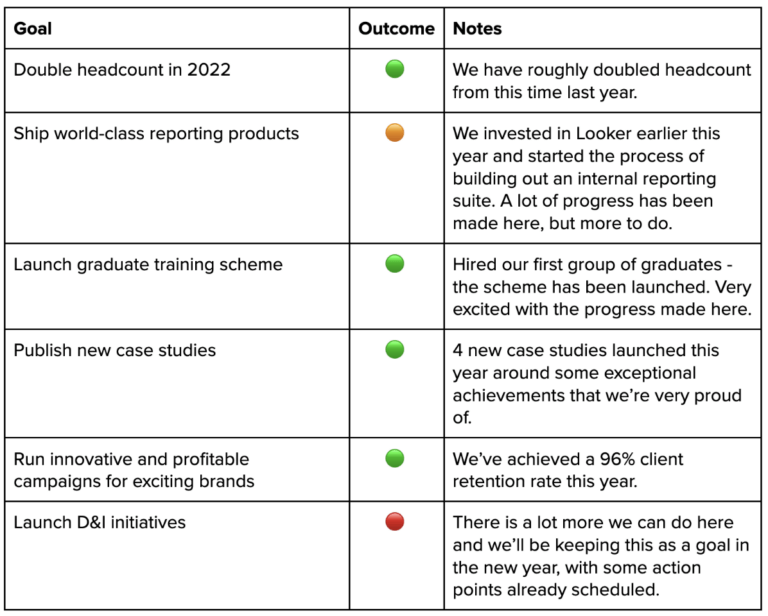
Lots of positives, and lots of learnings. Let’s dig into the details a bit more below.
Where are we now?
As we approach the end of 2022 and look ahead to 2023 it’s a good time to review where we are and where we want to be over the coming years.

The foundations have been set, we have an incredible team, we are achieving incredible results for our clients and we are on a good growth trajectory.
As we think about growth, we don’t just think of it as a traditional technology company might (i.e. looking for pure exponential growth); we aim for linear growth. There is a big difference between the two. For a services based business, growing too fast or without the right processes (internal technology, training, hiring, etc) can mean that service quality might decrease with growth. This is the main reason we are so focused on growing sustainably: as we grow we want our service quality to increase. Therefore we have to be very deliberate about how we plan for growth and approach it.
From a services perspective, we’ve made good progress across media and technology, but we’ve still very much at the beginning of our multi-year plan.
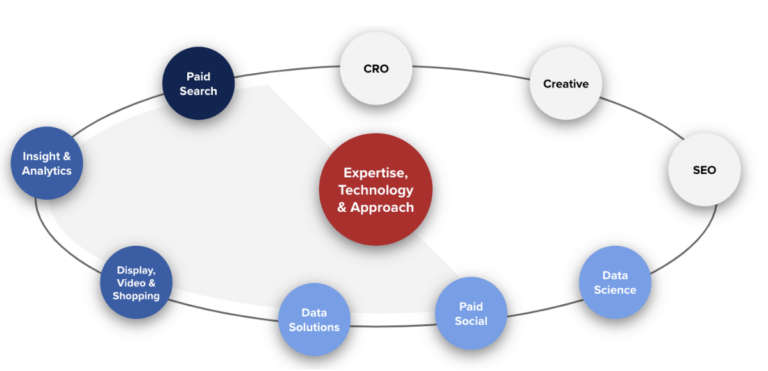
For the time being our focus remains on maturing our Paid Search, Paid Social, and Marketing Technology (Data Services) services, but when the time is right we can and will expand into other service areas.
With the right people, expertise, and technology we believe there are so many more levers we will be able to pull for our clients to help them achieve their targets.
What did we do as a team this year?
After working remotely for the first 2 years of our existence there were a few things we wanted to do:
- Have a company trip to spend time together.
- Get an office so we could have a place where we could meet when needed.
Organising the company trip was more complicated than expected. At the end of 2021, we were looking around for options – we toyed at one stage with going skiing in Europe – but then the uncertainty around travel restrictions meant we iced those plans and decided to stay local.
We took to Airbnb and had a look for something suitable. Eventually, the team found a manor near Derby, which was perfect. Big enough to host everyone and mostly in the middle of the country; so folks from all over would have an equal distance to travel.
We spent the weekend playing games, off-road biking (where we got covered in mud, evidence below), eating food, and hanging out.
One of the best decisions we made for the trip was to invite folks who were about to join the agency along to meet everyone – what an onboarding!
Getting our office
We launched our early careers scheme this year and we knew that to give the best education possible to the new joiners, the training should be in person.
Getting the office ready for the scheme was therefore a wonderful deadline to get organised and find ourselves a home.
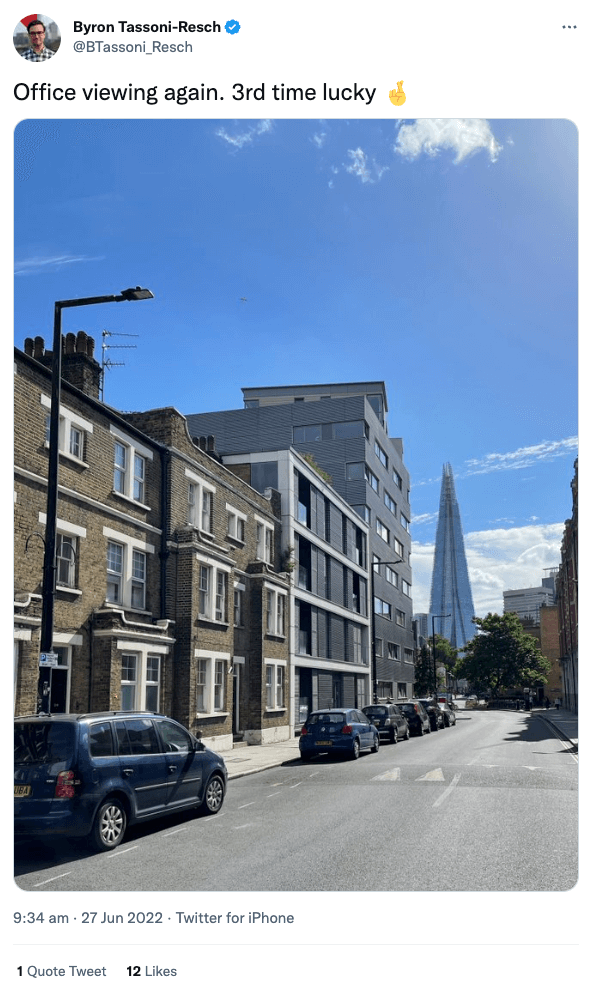
This was actually the third time we tried to find a HQ. The first 2 were scampered by various lockdowns over the last couple of years.
But, we did it. We found a good space between Waterloo East and London Bridge and moved in at the beginning of August.
Luckily we had Adam, who turned out to be pretty handy and helped make the space our own.
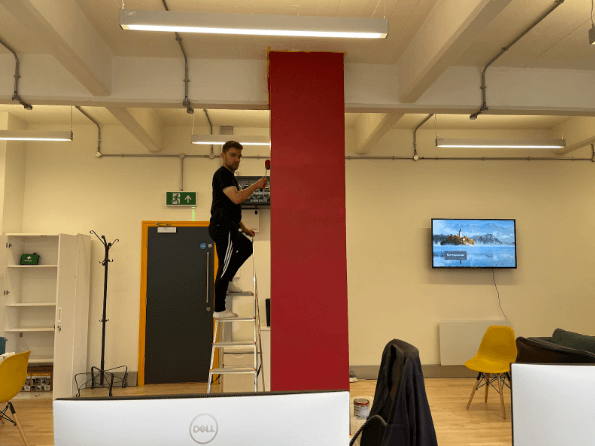
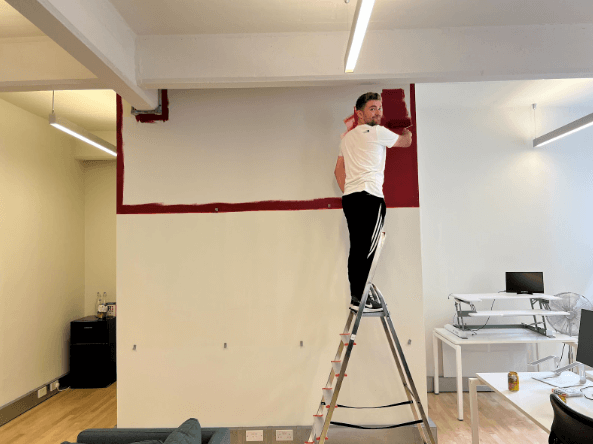
No office is complete until you have a neon sign up.
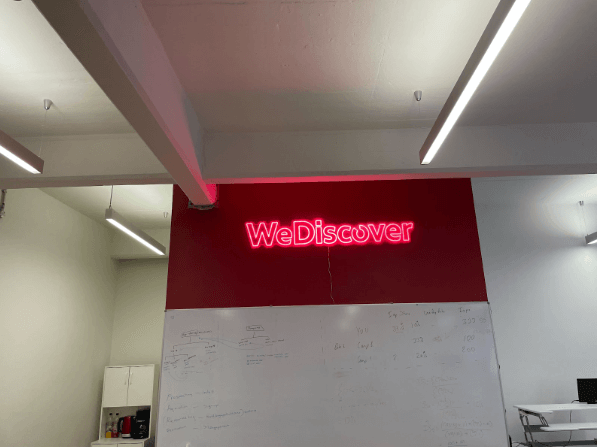
And of course, you’ll need plants, lots of plants.
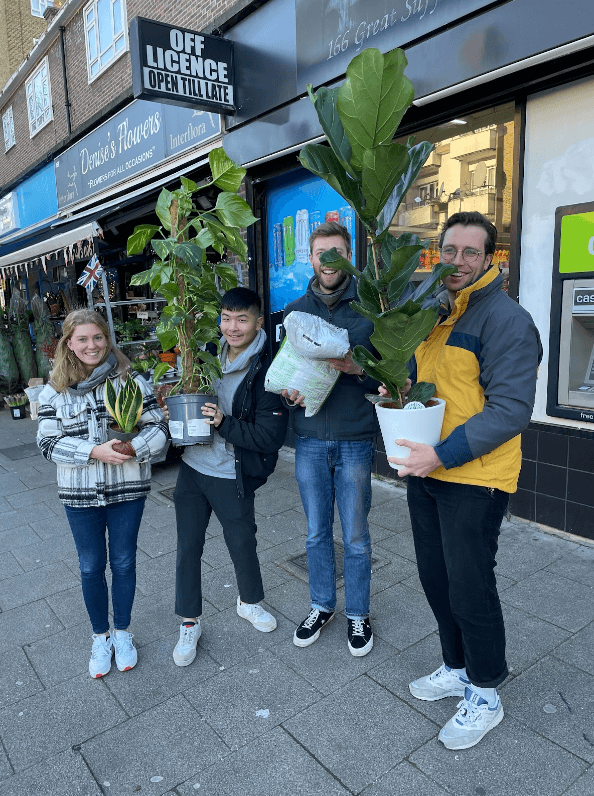
Once everything was ready, it was brilliant to open the office.
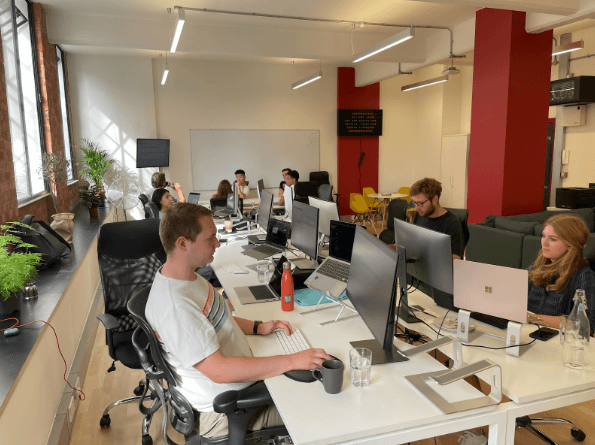
Then, towards the end of October, we held our first-ever Hackathon. We got everyone in, and spent 2 days working on projects, having fun, and being together.
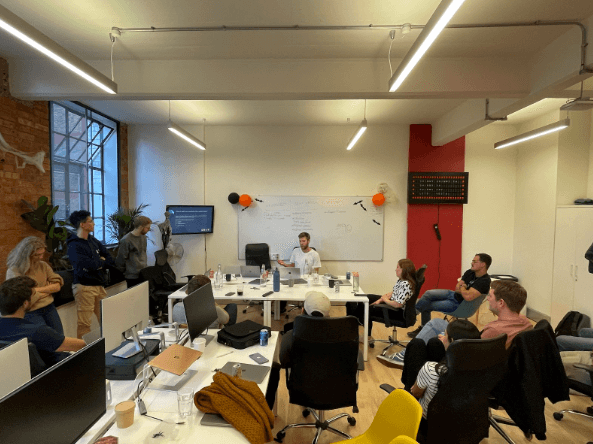
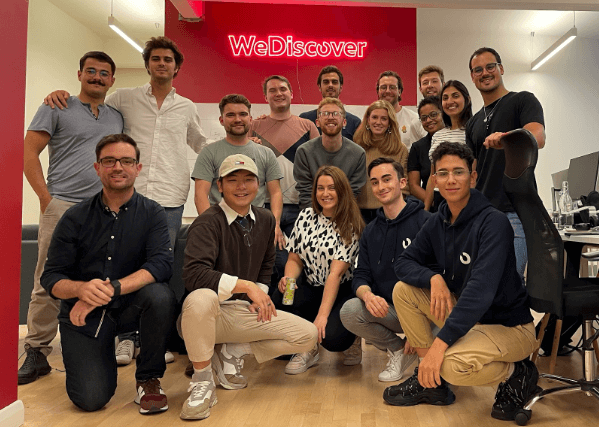
In November, to celebrate a brilliant year and because of the upcoming Black Friday and holiday season, we decided to have a little fun and get in on the action, spinning up a little ecomm store for our team and partners.
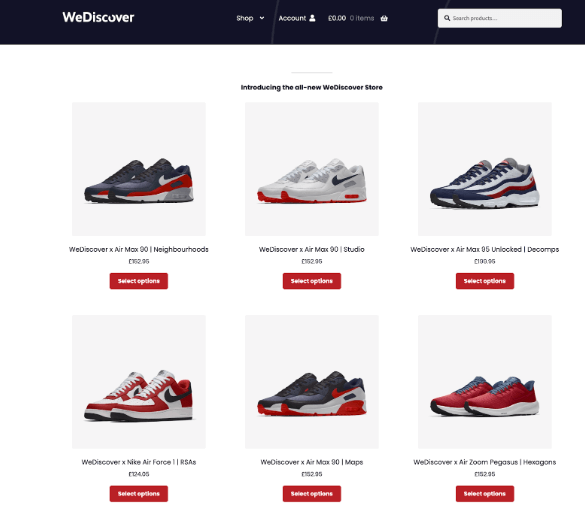
We gave out Coupon Codes and allowed folks to order their own custom WeDiscover sneakers.
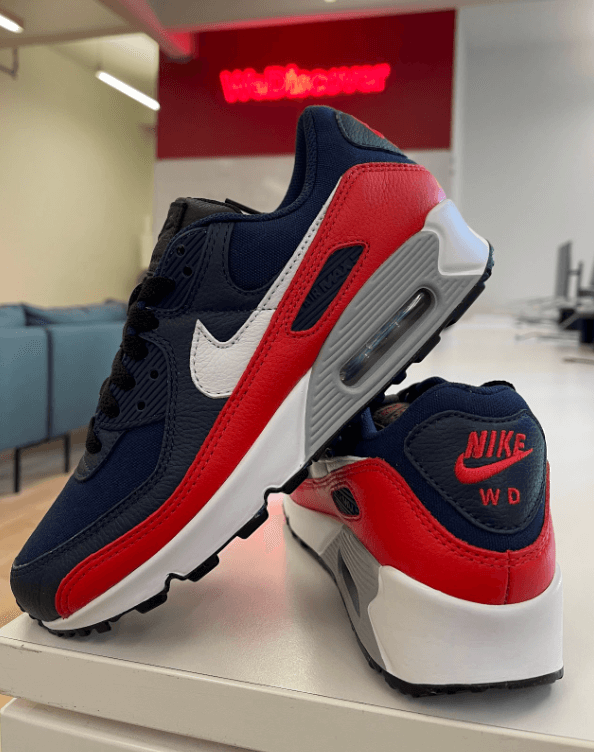
Becoming the best small PPC agency in the UK
After being nominated as finalists a few of the WeDiscover team members made their way to the Bloomsbury Big Top Arena in London to attend the UK Search Awards ceremony – a big one!
Incredibly, we went home with the award for the Best Small PPC Agency in the UK (under 25 employees)!
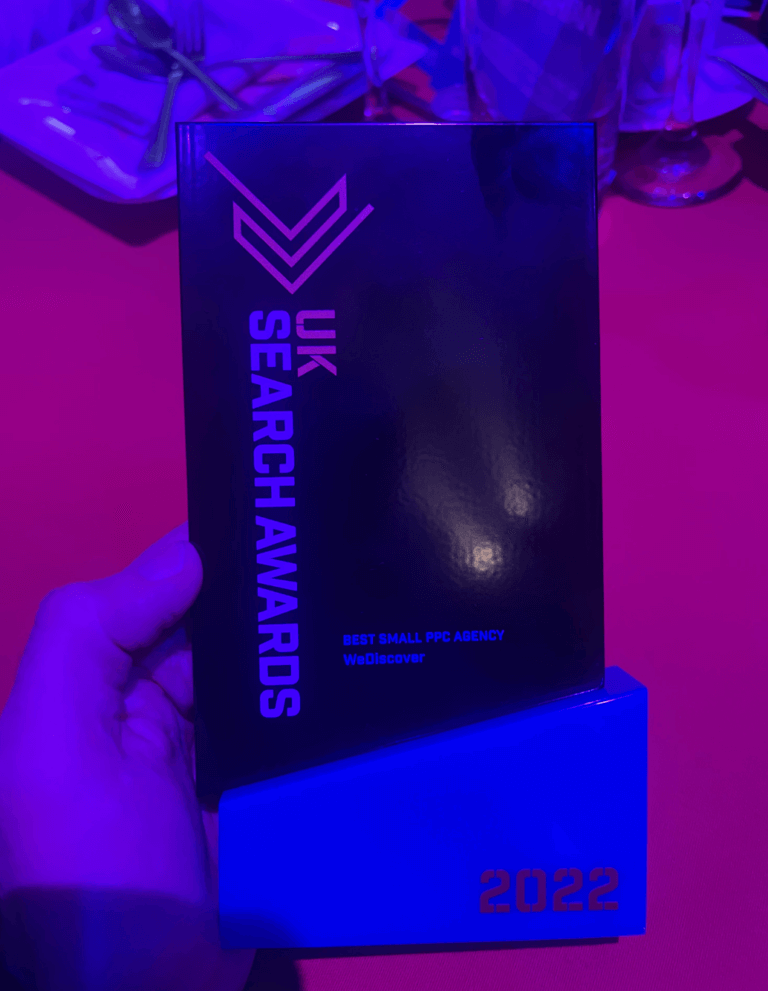
After only being 2 years old, and those years being pretty turbulent in the world, this award win felt incredibly good.
It’s a testament to the amazing work done by all team members at WeDiscover.
The moment it happened:
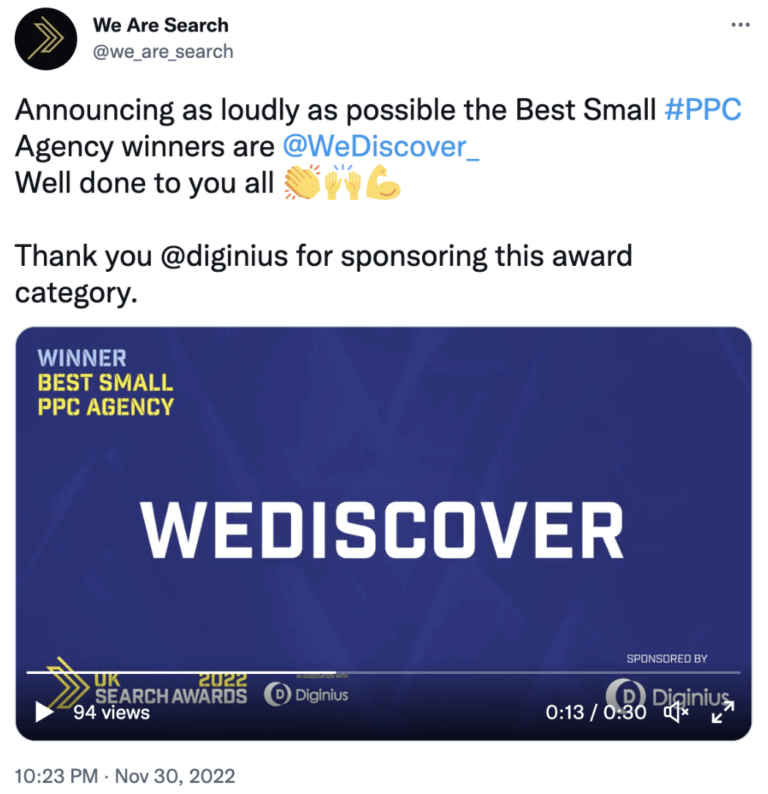
Going up to collect our award felt pretty good. We hope it will be the first of many!
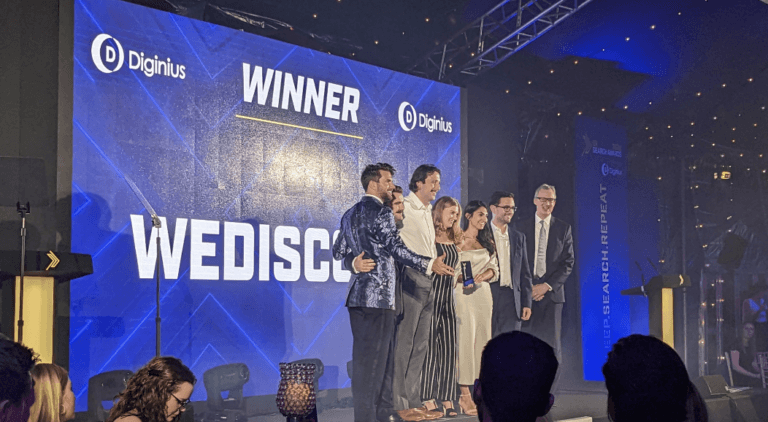
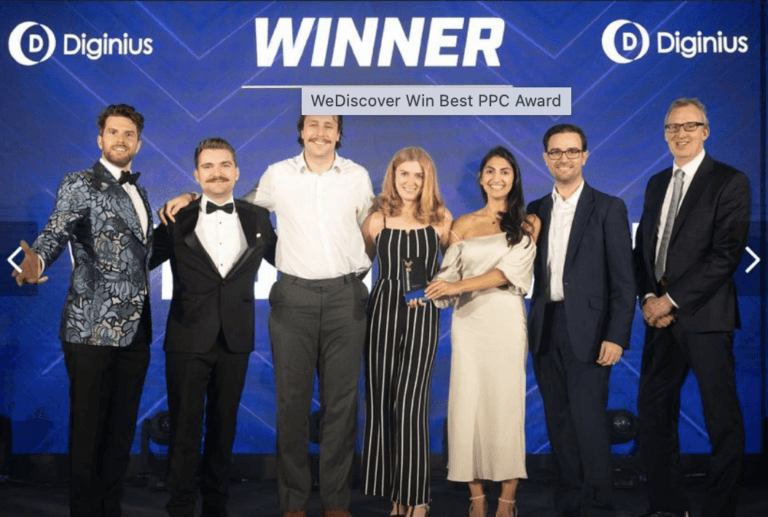
Launching our EMI options scheme
We made a fundamental change to the agency this year.
We launched our EMI Options Scheme.
For those who don’t know what that is, we (as the directors and co-founders) take a percentage of the business and create options for employees to buy shares at very favourable rates, thus allowing our team to own a piece of the agency.
When we first launched the agency we didn’t think we were going to go down the route of creating options. But, our minds were changed after speaking with the team (who have an incredible passion for the agency and wanted to own their piece of it).
So, every eligible full-time employee who joins WeDiscover now has the opportunity to own their share of the agency.
Starting our early careers scheme
Towards the end of last year we decided to set in motion the wheels for our Early Careers Scheme.
We have called this a Grad Scheme in the past, but we’re moving away from that terminology, because going forward it won’t be limited to just graduates, but also folks who didn’t go to university or who just want a career switch, in recognition of the fact that access to higher education isn’t the only indicator of exceptional potential.
If I look back at this year the scheme, and the success of it, is one of my proudest memories. Solely because I had very little to do with it. It was owned, managed and designed by select team members, who took the ball and ran with it.
The Interviews
The posting received 100s of applications within 48 hours and the team interviewed a great range of candidates before finalising offers with a small group of outstanding future team members.
The interview process was rewarding for us as a business as we explored the motivations of candidates who have not previously worked in the industry.
Our key focuses going in were fairness and feedback. We wanted to ensure that everyone who interviewed with us was able to leave the process with a positive experience regardless of whether they were successful, and we gave personalised feedback for candidates at every stage.
We also ensured we had CV-less interviews to ensure that our focus was on the individual’s drive, motivation and potential, and to reduce any unconscious bias.
You can read more about the process here.
The Scheme
In September this year, we then had our small group of Early Careers join us in the London office.
They have enjoyed a thorough training scheme to learn about paid search and client management. Since September we have delivered over 30 training sessions and countless pairing sessions and workshops channeling our approach to training and adult learning.
Our first set of Early Career joiners are already having a fantastic impact on the business through the work they’re contributing and the energy they have brought to the company! Their feedback on our processes and the scheme is also already being taken on board to help further improve the experience of future employees.
These new joiners have set the standard and will be on hand to support and guide our next early careers cohort in H1 2023!
Launching our personal development plans for the team
As we grow and our teams expand, we want to ensure the process of progression for all team members is tracked, measured and fair.
One of the ways we plan on doing that is via our version of Personal Development Plans (PDPs). As you might expect, our approach to this is analytical by nature. We’ve created a matrix of various skills we think are required in order to excel in performance media or technology. As an introduction, we break skills into Areas, Themes and Topics (as seen below). We then describe what is usually required at various skill levels (Core, Adept, Expert).
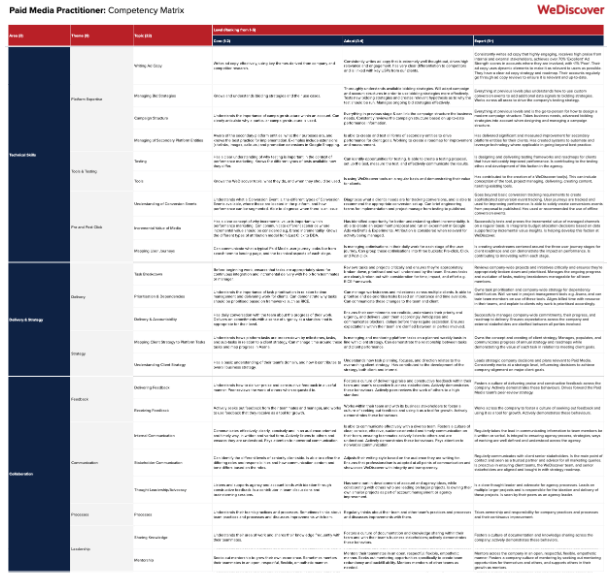
Team members and their managers can assess themselves for these Areas, Themes, and Topics and then decide where they want to focus their development on over the next 3-6 months. Usually, one or two focus areas will be chosen based on the direction they would like their career to move towards and what they find engaging.
Filling this out in a PDP then yields a report that showcases where you currently are, and where you want to get to, giving a visual and trackable framework for personal development.
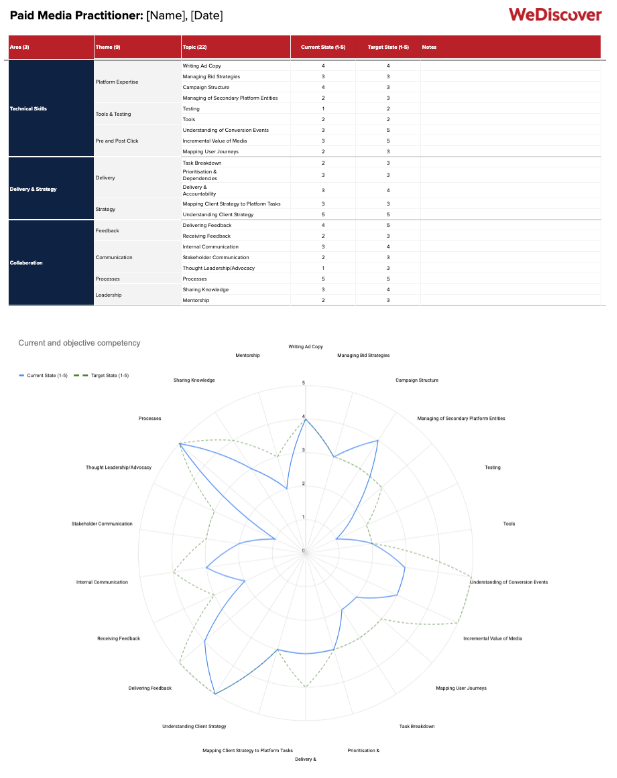
Back office operations
Operationally we made pretty large strides forward this year. We had always been tracking time allocation across teams, clients and projects, but we weren’t doing anything interesting with that data.
Towards the beginning of the year we spun up a few projects and work streams to change that. What we aimed to do was ensure that every client was getting the level of support they needed (and signed up for), and equally, as a business, we wanted to ensure that we understood and allocated the right volume of resources to make sure their targets were met.
We took the time tracking and project data and started to build out our operations system. First up was a macro view of client performance, which looked at resources allocated vs. planned for. Here we can see things like:
- Time allocated and used per month
- Internal costings per month
- Profitability ratios
- Servicing agreements
- Team allocation (tech & media)
- Individual team member time allocation
This lets us know if there is anything that we need to change from a resource allocation perspective, and when we need to do it (sensitive data has been pixelated for confidentiality across the following screenshots).
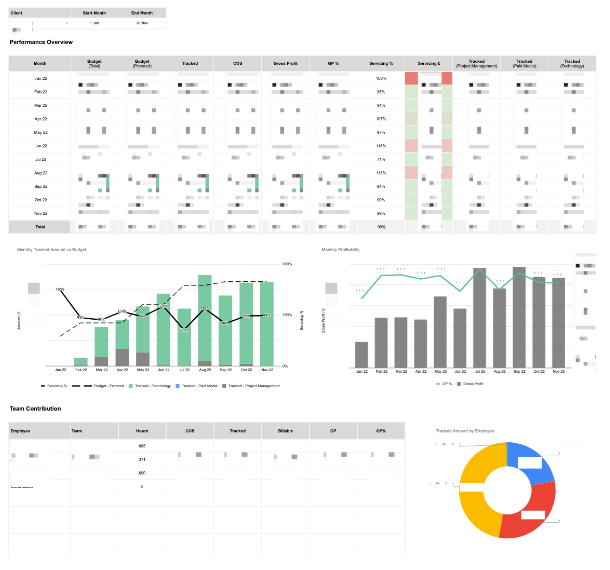
Then we wanted to get a view at an individual team member level. As a service-based business, our team members are our greatest asset, and we want to ensure that their work levels are at the right balance (too much leads to stress, and too little leads to boredom).
What we broke down was billable time allocation vs. internal time allocation, client responsibilities, and revenue generated at a client level.
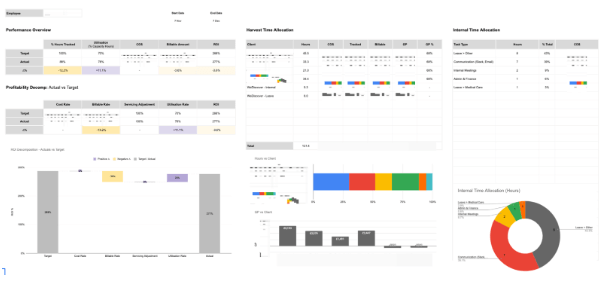
Then, we had a pretty obvious realisation that while we had this data at a Director level, it wasn’t accessible at an individual level. So we created personal reports where team members can see their own monthly resource plan.
This is only to be used as a guideline and to flag if there is a project or work-stream that is taking too much or too little time vs expectations.
This would never be used in annual reviews or as a guide for promotions, or pay rises. What it does do, is look at how much time has been spent on a client so far through the month alongside the goal, and work out – if the current pace of work continues exactly the same over the month – how much time would be allocated at month end and how that shapes up vs the target.
Therefore, in theory, each team member can understand as the month goes on where additional focus should go.
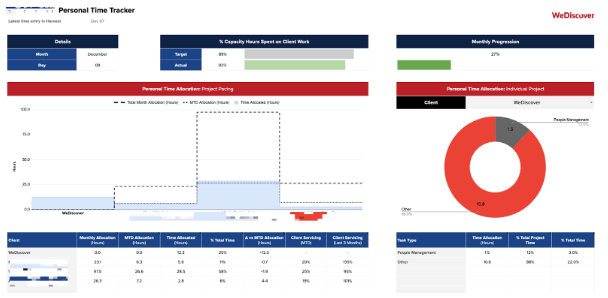
Finances
This year we doubled top-line revenue and maintained our gross and net margins, which is what we were aiming for. A large contributor to this was maintaining a 96% client retention rate across the year (which is the metric I am most proud of). As we move into the next year, our target is to grow top-line revenue by around 75% whilst keeping the margins as they are.
Over the last year, we have also levelled up our Financial operations by bringing in a fractional FD, who has helped bring structure to how to forecast, plan and price. All of which are maturing as we go on.
We have received a lot of interest from other digital agencies around investments into WeDiscover, which we haven’t accepted due to the fact that we have always been quite conservative with our cash reserves and don’t require additional funding at this stage. But the discussions were very valuable from a benchmarking perspective to understand how we are doing in the industry.
Technology
As a growing agency, we are in constant discussions internally around choosing to allocate technical resources to client-related work (where we directly earn revenue) or internal technology work (where we create IP, and therefore ultimately products/services that we can ship to clients much faster once created).
As an estimate, we currently allocate around 30%-40% of some technology team members’ time to internal technology projects.
There have been a few big milestones and projects that are worth calling out:
-
- We have onboarded Looker as our BI tool. Expensive, yes. But it gives us reporting and insight capabilities that are unrivalled across the agency landscape.
- Built internal tools for standardising server-to-server conversions, reporting on conversion maturity, building decomposition charts, automated audience upload processes, share of search reporting, and more.
- We’ve created a new function in our tech team: solution engineers. They will assist our clients with marketing technology operations (tagging, tracking, and platform management).
We are continuing to hire and train our Technology team as we go into 2023, and expect to see a lot more innovation here as we grow.
Content releases
This year we did a big push on writing more case studies. All-in-all we published 4 new articles:
-
- Building a Credit Map of the UK
- Leveraging Cohort Maturity to improve ROAS
- Using Hexagonal Plotting and Dynamic Inventories to increase revenue
- Using Micro-Conversions to Kickstart Adventure Travel
These have done a huge amount for us, both in terms of increasing our brand awareness (and showcasing the type of work that we do), but have also resulted in a huge amount of inbound leads. We will be continuing to publish many more case studies as we move into 2023.
Regarding scripts, we released 2 new Google Ads scripts this year:
-
- ETA to RSA Builder (which is actually a big organic traffic driver for us)
- Decomposition Chart Builder
In addition to scripts and case studies, we wrote a few articles about the agency, our hiring processes etc. The main driver for this was to give some extra insight to people who are thinking about joining the team, either as a grad or experienced team member.
-
- How WeDiscover approaches Training & Development
- Getting Started With Our Early Careers Scheme: The First Interviews
Some new content that we will be writing about next year is something we’re calling ‘Showcases’, which are not case studies or scripts but sit somewhere in between. They will highlight approaches, theories we have explored, new ideas, etc.
We have the ability to run some sophisticated experiments, so writing about it and sharing them with the industry is something we’re excited about doing.
Going into 2023
It’s turbulent out there at the moment. The cost of living crisis, the funding landscape, the energy crisis. All of these things make for a difficult outlook.
However, we are still expecting to grow. As difficult as things are at the moment, we actually think this is where we can add real value and shine as an agency.
Our performance capabilities and technology (understanding value, incrementality, LTV, etc) is what companies will be leaning towards over the next few years.
Here are some of our targets that what we’re looking forward to working towards:
-
- Growing to around 30+ team members
- Growing revenue by around 75% while maintaining current margins
- Expanding our Paid Social technology and team
- Launching our Employee Pillars scheme (which will include an employee led D&I team, amongst other groups focussing on sustainability and CSR initiatives)
- Expanding our intelligence service (reporting, insights, etc).
Continuing to build some of the most innovative novel solutions for the most exciting brands - Launching a second round of our Early Career scheme.
Since the start of the agency, one of the big reasons we have been able to work with so many wonderful clients is because of our approach to solving challenges. Using the skill stacks of performance marketers, engineers, and data scientists allows us to find answers in unique and novel ways.
As we grow, we want to ensure that we maintain and foster this approach to solving problems. This is, and will always continue to be, part of our agency mindset and ethos.
In closing
The strength of any agency is its people. So when I look back over 2022, the biggest success has been our team members. As we’ve gotten bigger, the ability for team members to own entire projects, take initiative, and grow has been incredible to witness.
I have so much pride in everyone who works here and feel very lucky to call them colleagues.
Grateful for the clients who have chosen us to work with them and trust us with exciting projects, increased budgets and expansions into more and more channels.
I love the work that we are doing and the plans that we have. It feels like the only limitation at the moment is our imagination (and time!)
Roll on 2023.
Byron & Adam
